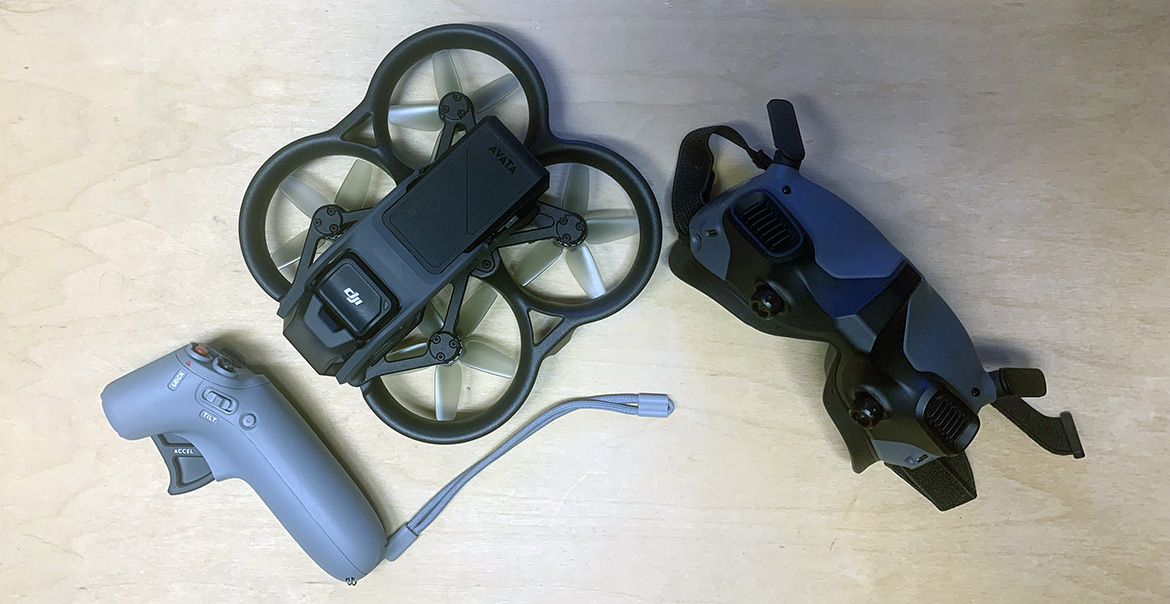TL;DR
Think drones are too big and complicated? The DJI Avata and Goggles 2 prove you wrong. This compact, robust system offers intuitive gesture controls and an immersive FPV experience, even for glasses wearers thanks to adjustable diopters. While it lacks a carrying case and some advanced camera controls, the drone delivers impressive speed, responsiveness, and good image quality, with a decent 18-minute flight time. Ready to experience flight like never before? Dive into the full review to see if the DJI Avata is your next must-have gadget.
Camera-equipped drones have become ubiquitous. They are available in a wide variety of designs and technical specifications. Early drones were often large and cumbersome, demanding significant expertise for proper operation. Maintaining stable flight was challenging, and accidental collisions were common. Therefore, upon receiving the compact packaging for the DJI Avata and Goggles 2, initial skepticism arose regarding whether it might be a mere toy due to its diminutive size. This assumption proved to be incorrect.
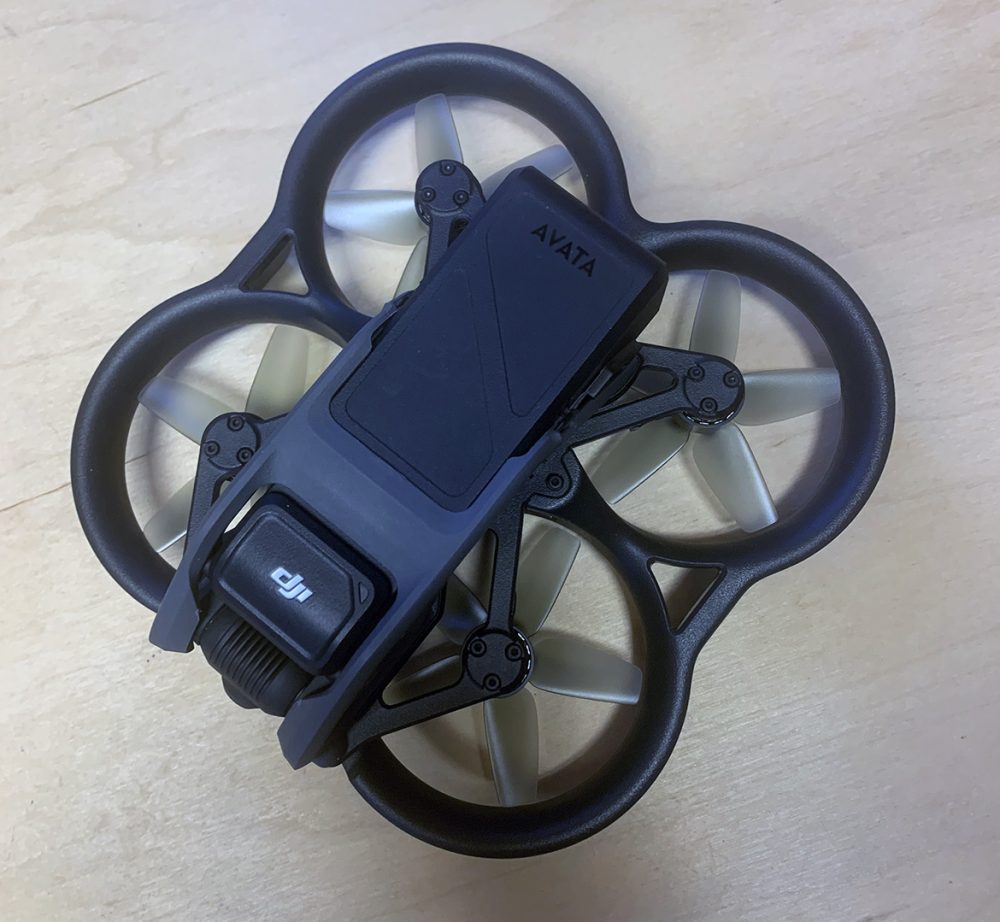
Upon unboxing the DJI Avata, two immediate impressions stand out: its compact size and lightweight design, coupled with its apparent robustness. The Avata features substantial propeller guards, providing significant protection against damage. The package also includes spare propellers. The battery charger was promptly connected. The Goggles 2 also exhibit a solid build quality and a sleek design. To minimize weight, DJI has opted for a separate battery pack for the goggles, which was also connected to its charger. Next, the controller was examined.
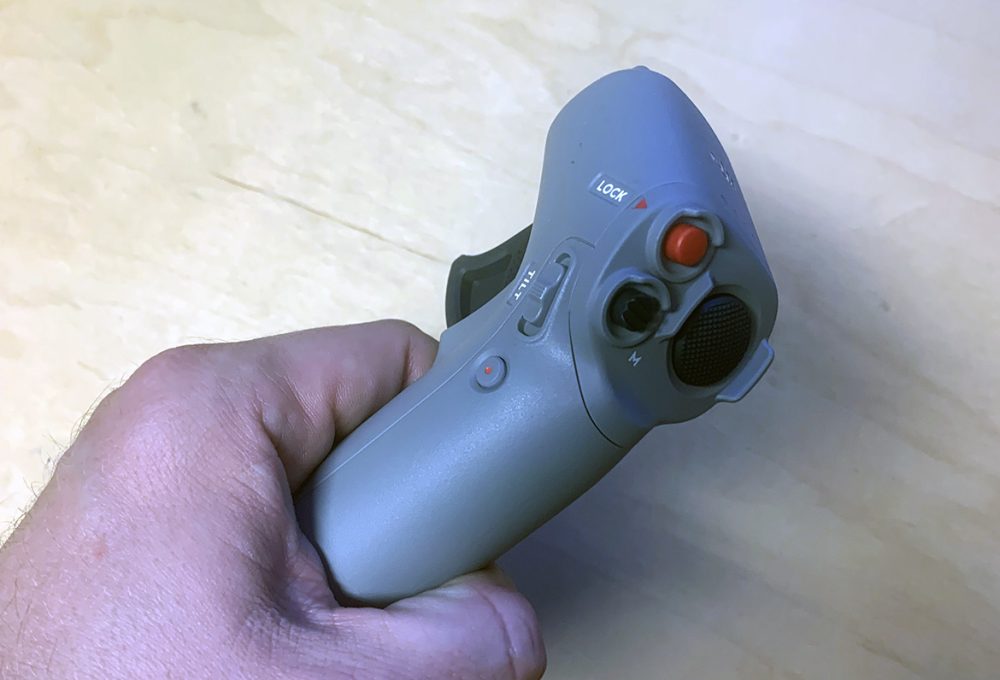
The controller integrates a built-in gyroscope, enabling intuitive control via hand gestures: tilting the hand up or down adjusts altitude, while rotating the hand left or right controls lateral movement. This provides a remarkable sense of freedom, which will be discussed further later. The controller’s construction is satisfactory, though it feels somewhat less premium compared to the other components due to its plastic construction. Ergonomically, it fits comfortably in the hand, and all buttons are easily accessible. The controller requires charging as well, utilizing an integrated battery, unlike the goggles.
Notably absent from the packaging is a carrying case for the components. This omission is somewhat uncharacteristic of DJI, as a practical case is often included. Given the number of individual components, a dedicated carrying case would have been particularly beneficial.
The drone battery required a considerable charging time, but with that complete, a test flight was conducted.
Upon powering up the Goggles 2, it became apparent that a cable was necessary to connect a smartphone. A USB-C to Lightning cable was available, resolving the issue, but the absence of such a cable in the box is a minor inconvenience. The included accessories are rather limited. Considering the price point, including a selection of cables to facilitate simultaneous charging of all components would have been a welcome addition.
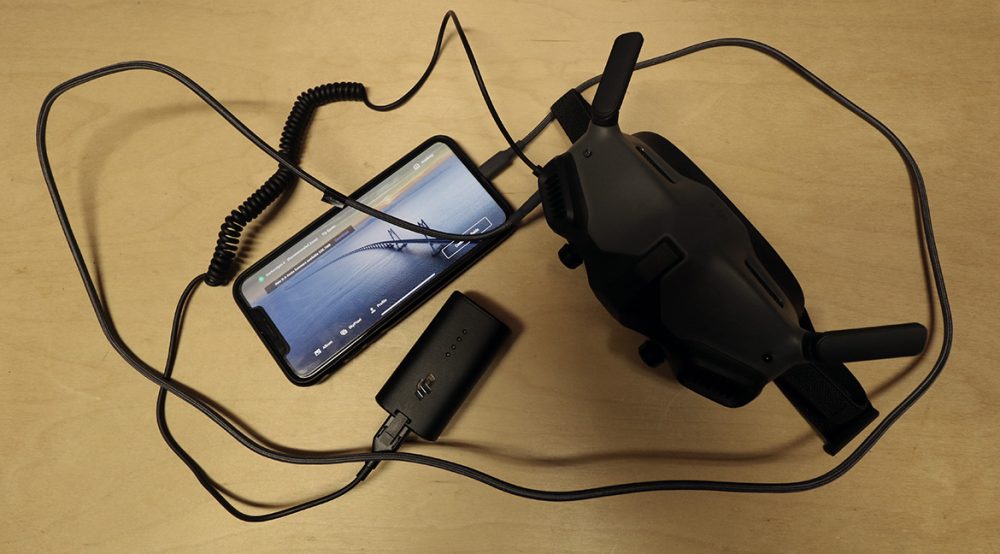
After connecting the smartphone to the Goggles 2, the DJI app was downloaded. The app provides clear, step-by-step instructions on the proper startup sequence and operation of the Avata drone.
The Goggles 2 incorporate adjustable diopters, allowing for correction of individual vision. As a glasses wearer who does not use contact lenses, initial concerns arose regarding the inability to wear glasses beneath the goggles. However, upon trying the Goggles 2, it was discovered that the diopters provided sufficient adjustment to compensate for the refractive error. Astigmatism correction is not available, resulting in some residual blurring. The degree of refractive error that can be accommodated is unknown; however, the adjustment was adequate in this particular case.
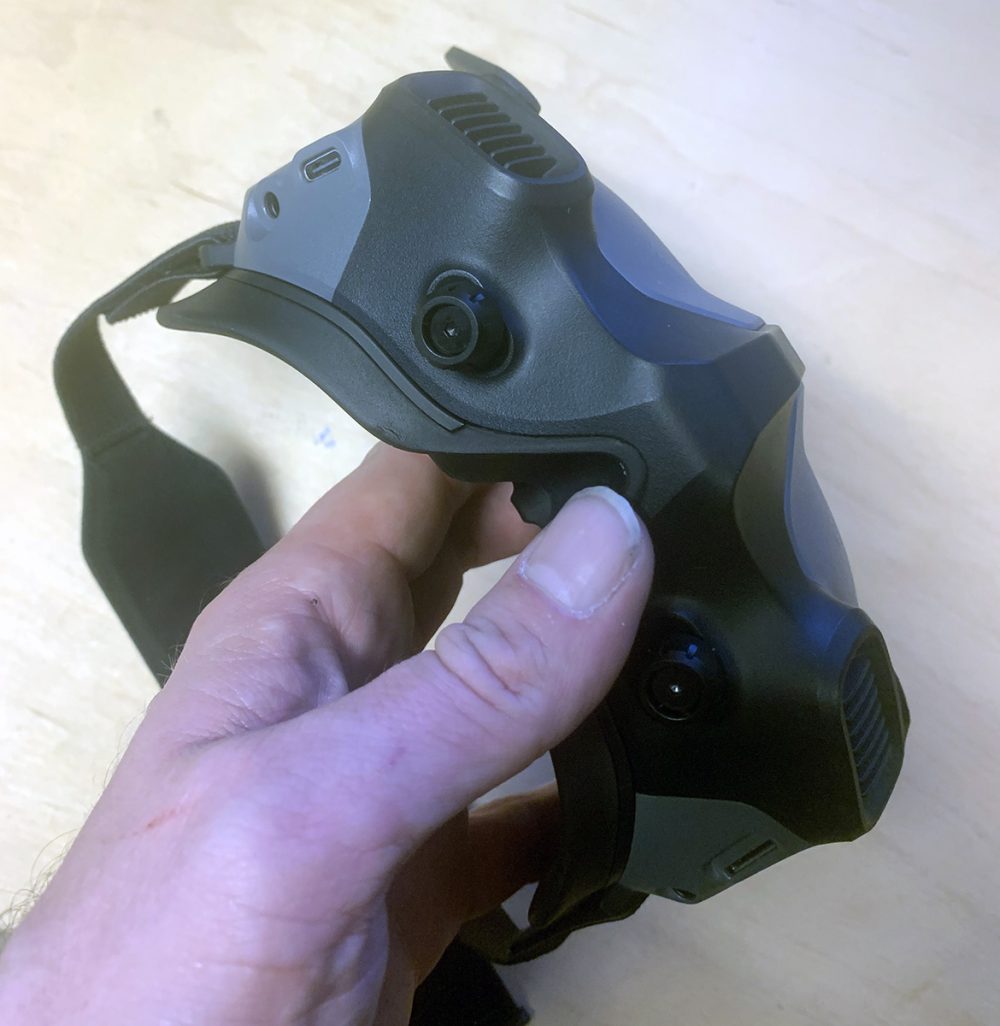
Experiencing the drone’s perspective through the Goggles 2 is truly impressive. After finalizing the settings, the drone was launched. The drone’s speed and responsiveness, combined with the ease of control, created an enjoyable experience. A brief acclimation period was required to become accustomed to the controller, after which operation felt natural. The controller also features buttons for camera tilt, recording, and a return-to-home function for emergencies. The display provides real-time data, including altitude, speed, and distance from the operator. A fully charged battery provides approximately 18 minutes of flight time, after which recharging is necessary. The controller and Goggles 2 batteries offer significantly longer operational durations.
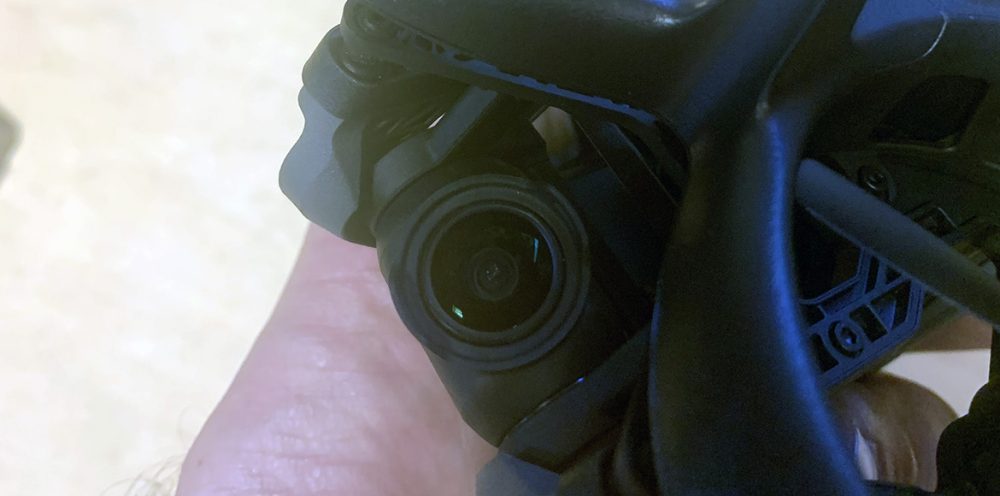
During the second flight, the camera’s performance was evaluated. A memory card was inserted into the Goggles 2, and the newly charged drone was prepared for flight. All camera settings are accessed via a touchpad on the side of the Goggles 2. The touchpad’s sensitivity proved to be less precise than desired, leading to some difficulty configuring settings. One of the few limitations of the Avata is the limited range of camera adjustments. The camera supports 4K recording at up to 60fps, and 2.7K recording at 120fps for slow-motion capture. However, manual aperture and white balance controls are absent. While the automatic mode is effective, greater manual control would be preferable for filmmaking applications.

The display indicated the option to record to either the memory card in the Goggles 2, the Avata itself, or both simultaneously. The presence of a memory card slot on the drone was initially unclear. After consulting online resources (as neither the quick start guide nor the app provided this information), it was discovered that the slot is located in an awkward and somewhat concealed position near one of the propellers.
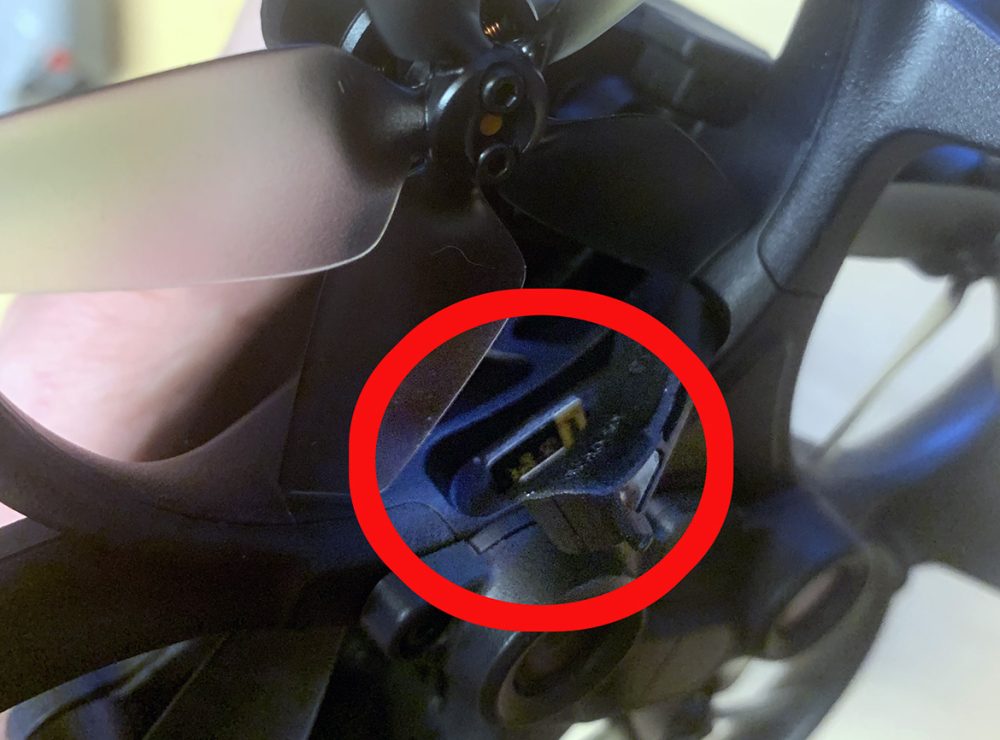
The camera’s image quality is adequate, and the night mode performs reasonably well, producing a slightly grainy but still sharp image. Recording to both the drone and the goggles is recommended. Recording to the goggle card ensures data redundancy in case of an accident. However, the image quality is superior when recording directly to the drone’s memory card, as this avoids potential transmission-related data loss that can occur if coverage is interrupted.
The battery life of 18 minutes is acceptable, considering the context and is comparable to the 20 minutes offered by larger drones. Extended flight sessions necessitate multiple batteries, which are relatively expensive at approximately 1500 SEK each.
In conclusion, the minor shortcomings of the DJI Avata and Goggles 2 do not significantly detract from the overall experience. Therefore, this system receives a strong recommendation. Flying a drone has never been more accessible or enjoyable, providing a compelling approximation of flight!
DJI provided test units for this review. The provision of review units does not influence our editorial independence.
